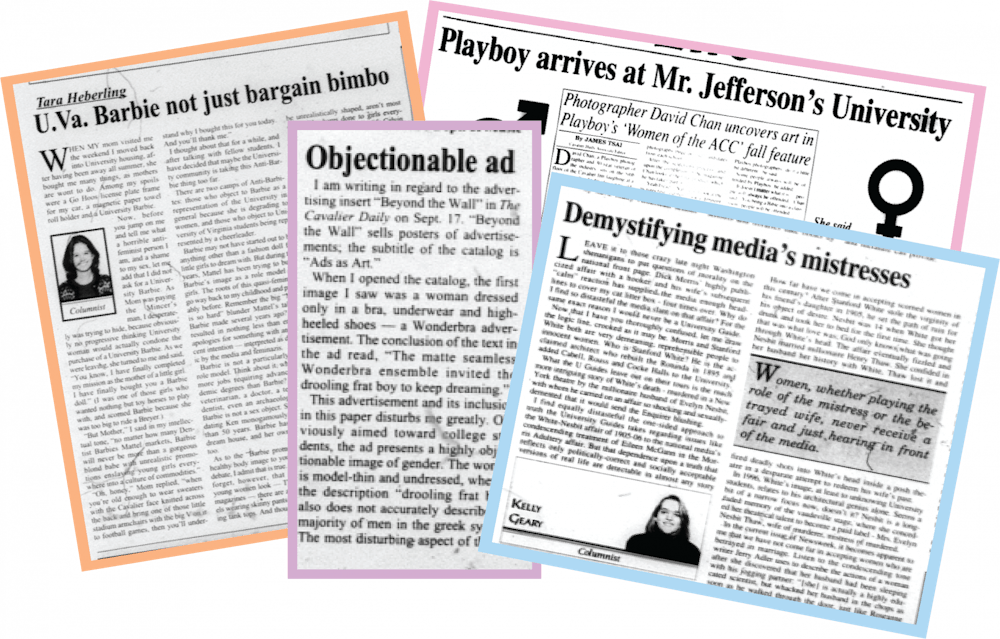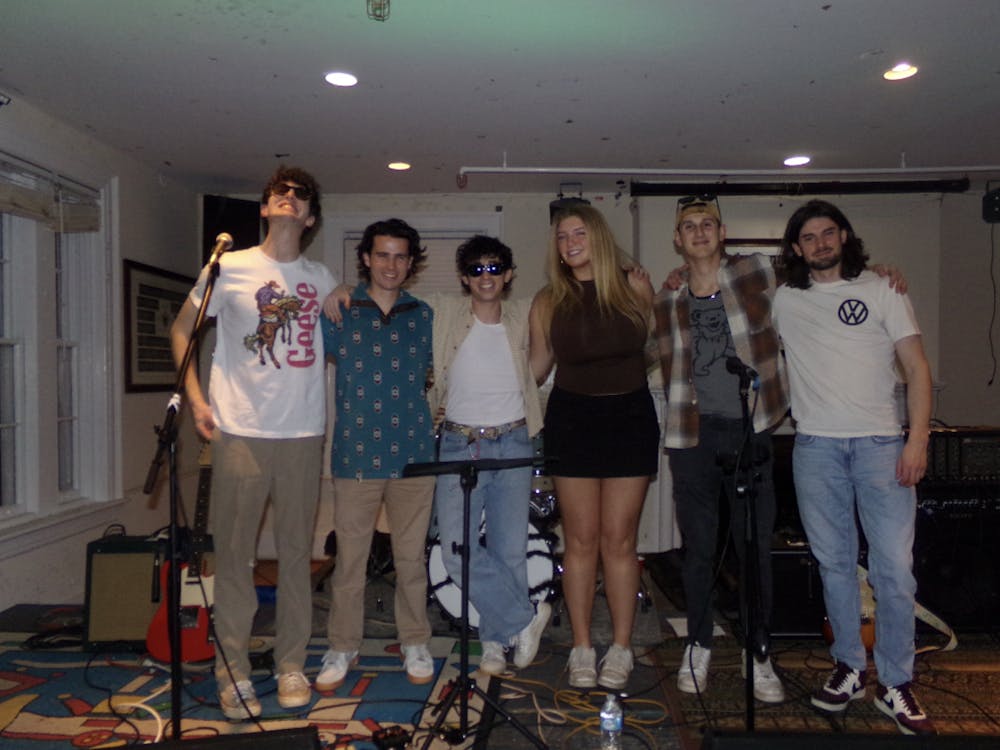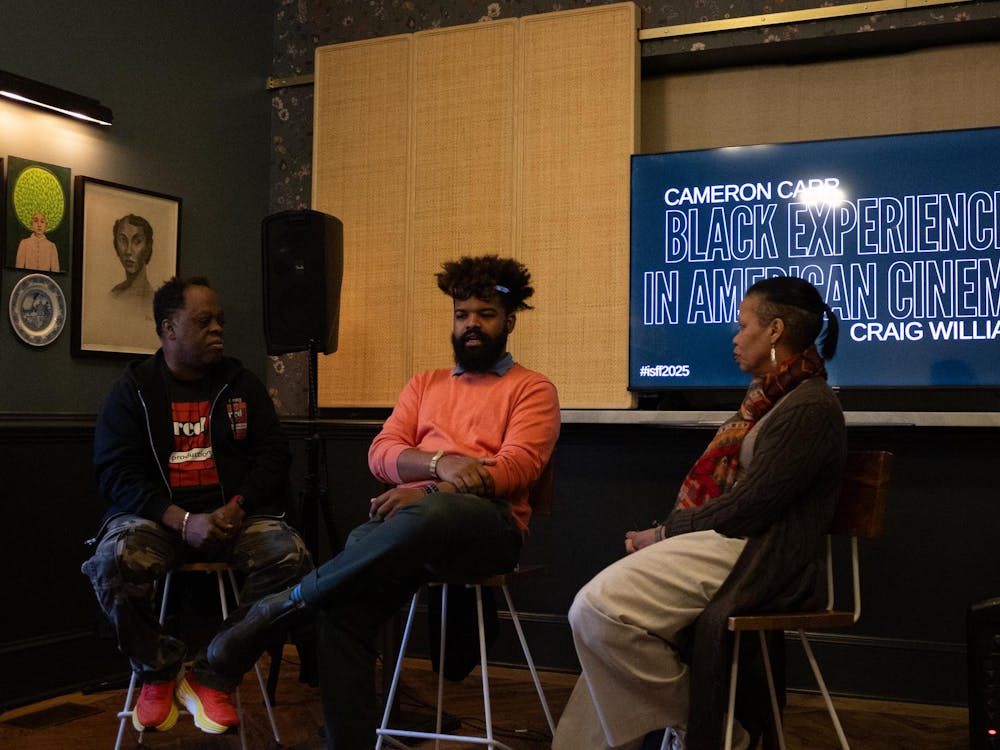The University has been celebrating the Bicentennial since Oct. 2017, hosting various concerts, talks and events to commemorate the 200 year anniversary of the University’s founding. This birthday is certainly something to be proud of, but it’s important to note that for many, the University has not been an opportunity for two centuries. The first class of women was only admitted to the University in 1970 and was capped at 450 students, and the University only began widely admitting students regardless of sex in 1972.
The entry of women to the University was met with fierce opposition from the administration and student body at the time. An article published in The Cavalier Daily on April 11, 1967 reads, “We want to stress from the outset of such debate that we look with horror upon the prospect of a large-scale female invasion, other than for purposes of a party weekend, of these traditionally male grounds.”
An all-male student population likely would have allowed things like this to be published uncontested in The Cavalier Daily. This began to change after the school became coeducational. One of the most prominent ways this is seen in The Cavalier Daily is in the form of media criticism, with female students, writers and columnists publishing responses to popular media, arts and culture around Grounds and beyond.
In the Sept. 9, 1997 issue of The Cavalier Daily, a Letter to the Editor written by Maria K. Pulzetti was published under the headline “Objectionable ad.” Pulzetti was writing in response to an advertisement titled “Beyond The Wall,” a catalog that sells prints of advertisements as wall art, that appeared in the form of an insert in The Cavalier Daily.
“When I opened the catalog, the first image I saw was a woman dressed only in a bra, underwear and high-heeled shoes — a Wonderbra advertisement,” Pulzetti writes. “The conclusion of the text in this ad read, ‘The matte seamless Wonderbra ensemble invited the drooling frat boy to keep dreaming.’”
Pulzetti goes on to deliver a feminist critique of the ad’s inclusion in the newspaper. “Obviously aimed toward college students, the ad presents a highly objectionable image of gender,” the letter reads. “The most disturbing aspect of the ad, however, is the statement that a certain type of bra ‘invites’ the fraternity boy to ‘dream.’ ...The objectification of women as sex objects can lead to problems with sexual assault; when men see women only as sex objects, as in this ad, they may also perceive that they have the right to take advantage of a woman’s sexual availability.”
Feminist interpretations of popular cultural products don’t end here. In fact, on the next page of the same issue that Pulzetti’s letter is in, appears an article by regular columnist Tara Heberling. Titled “U.Va. Barbie not just bargain bimbo,” Heberling’s article is a defense of the release of a University themed Barbie doll. The doll, dressed in a University cheerleading uniform, caused some controversy.
“There are two camps of Anti-Barbie-ites,” Heberling writes. “Those who object to Barbie as a representation of the University in general because she is degrading to women, and those who object to University of Virginia students being represented by a cheerleader.”
Heberling first dismantles the former part of the argument. “Barbie is not a particularly awful role model,” she posits. “Think about it, who’s had more jobs requiring advanced academic degrees than Barbie? She’s a veterinarian, a doctor, a teacher, a dentist, even an archaeologist. And Barbie is not a sex object. She’s been dating Ken monogamously for more than 50 years.”
Then, Heberling defends the University Barbie’s outfit by defending the actual University cheerleaders. “But who are the metaphors for school spirit?” she asks. “Who are the most visible embodiments of healthy bodies (and healthy minds)? Who leads the entire student body — many of whom are drunk, disruptive and puking, might I add — in the Good Ole Song? It is time we stop thinking of cheerleaders as ditzy bimbos in short skirts. I personally am not upset that my University is represented by a Cavalier cheerleader. I am rather proud, in fact.”
Through the publication of subjective pieces like opinion columns and letters to the editor, women at the University were able to criticize the media productions publicly in the student newspaper. On Oct. 1, 1996, an opinion column by Kelly Geary was published, titled “Demystifying Media’s Mistresses.” The article describes how the media discusses women in public situations of adultery, serving as a response to the media describing how the wife of political commentator Dick Morris’ had a “calm” reaction to her husband’s affair.
“Women, whether playing the role of the mistress or the betrayed wife, never receive a fair and just hearing in front of the media,” Geary writes. “You either are a slut or an annoying wife. You are responsible for the marriage falling apart. But, if you are the kind of woman who chooses to settle her personal problems in private, the media portrays you as a weak, dependent follower of the patriarchal system.”
Perhaps the most fascinating example of feminist reactions to arts and entertainment productions came in April of 1998, with the arrival of Playboy’s “Women of the ACC” issue on Grounds. The magazine featured University students Cara Lee MacDonald and Lisa Winsor. The Cavalier Daily published columns side-by-side in their April 1, 1998 print edition — one by the male Life Editor Patrick Bernal, the other by the female Life Editor Lisa French. Bernal’s column takes the opinion that the “Women of the ACC” spread gives publicity to the underrepresented female athlete, while French takes a more critical approach.
“Besides, a beautiful body will wrinkle and sag and droop someday,” French writes. “Why not expand our efforts promoting a lasting attribute like women’s minds or souls? Who’d have thought women have something more to offer than just flesh? I think there is much more to every University woman than appears on the outside.”
So, sorry to the writers of that 1967 article — the female invasion happened. Women’s voices, opinions and reactions were able to be made public, allowing deeply gendered culture to be criticized through an arts and entertainment lens. These articles not only document the experience of women at the University, they prove to a traditionally male space that their identity exists outside of being a date during party weekends.







